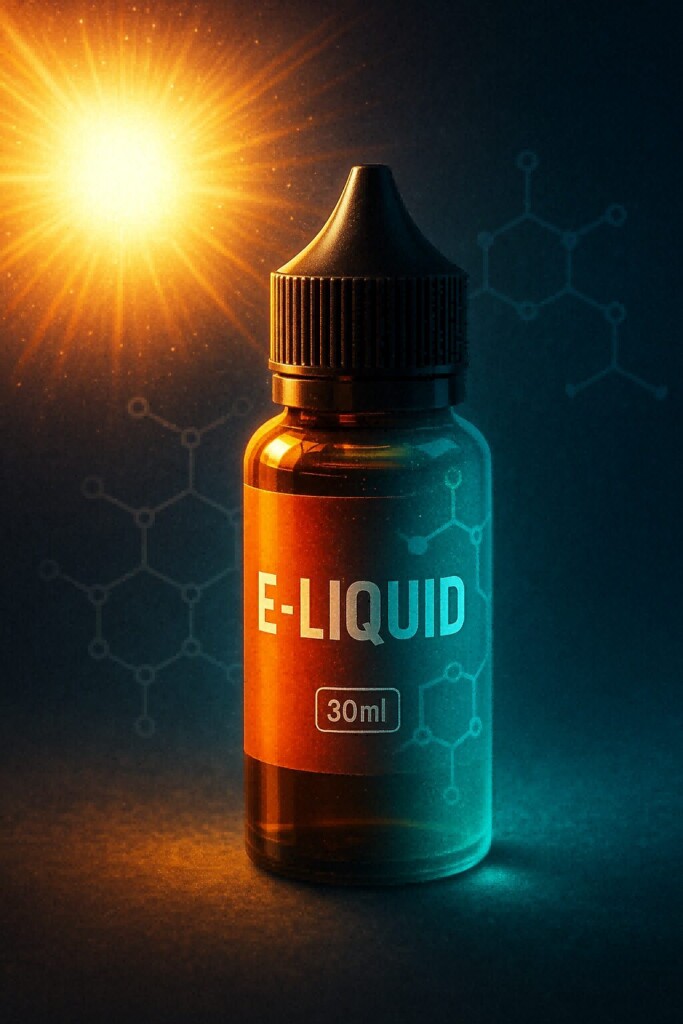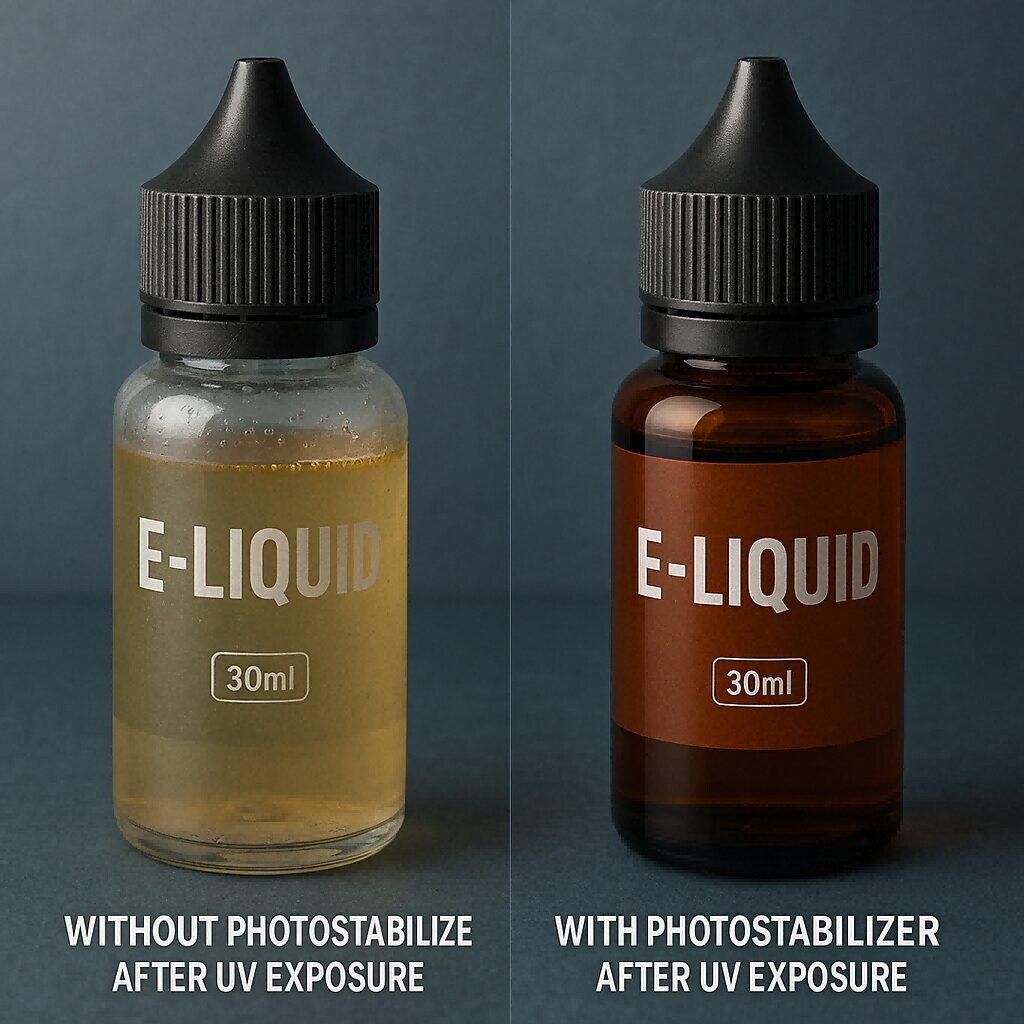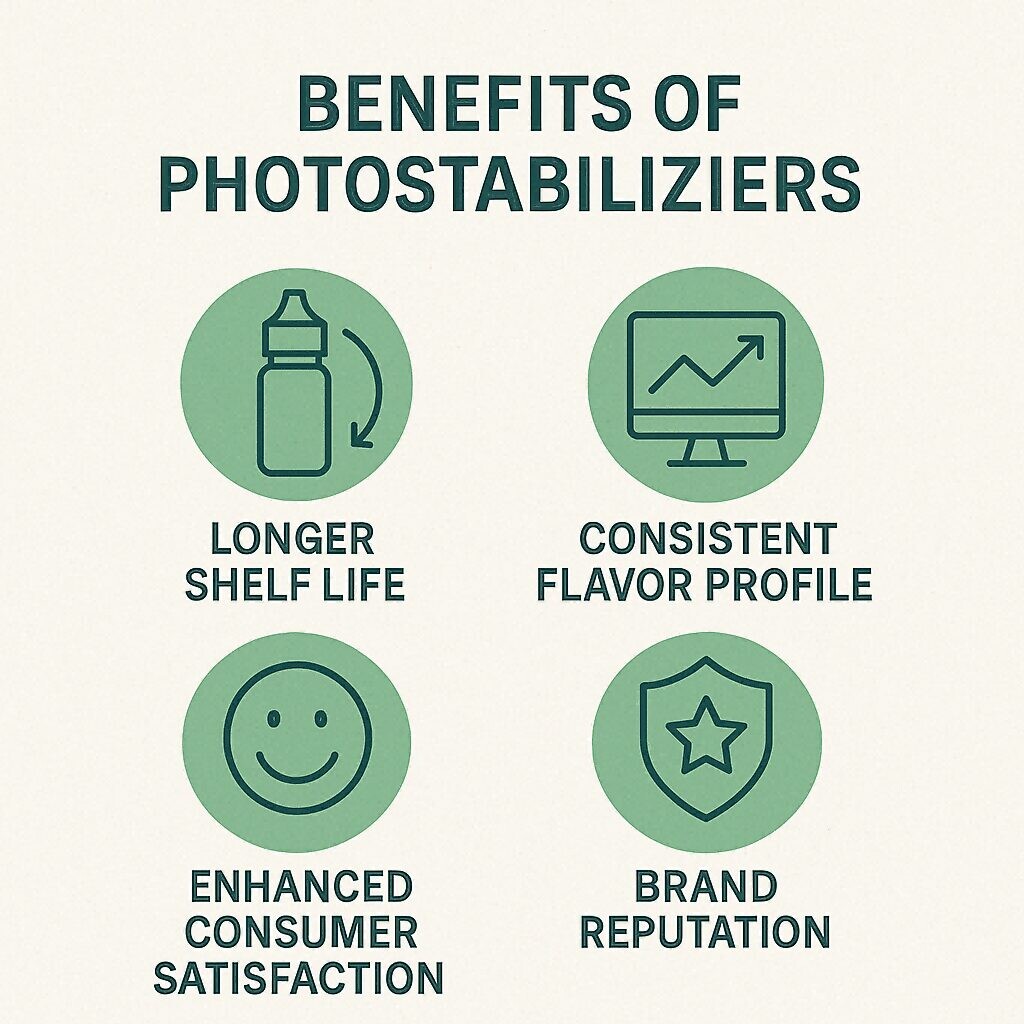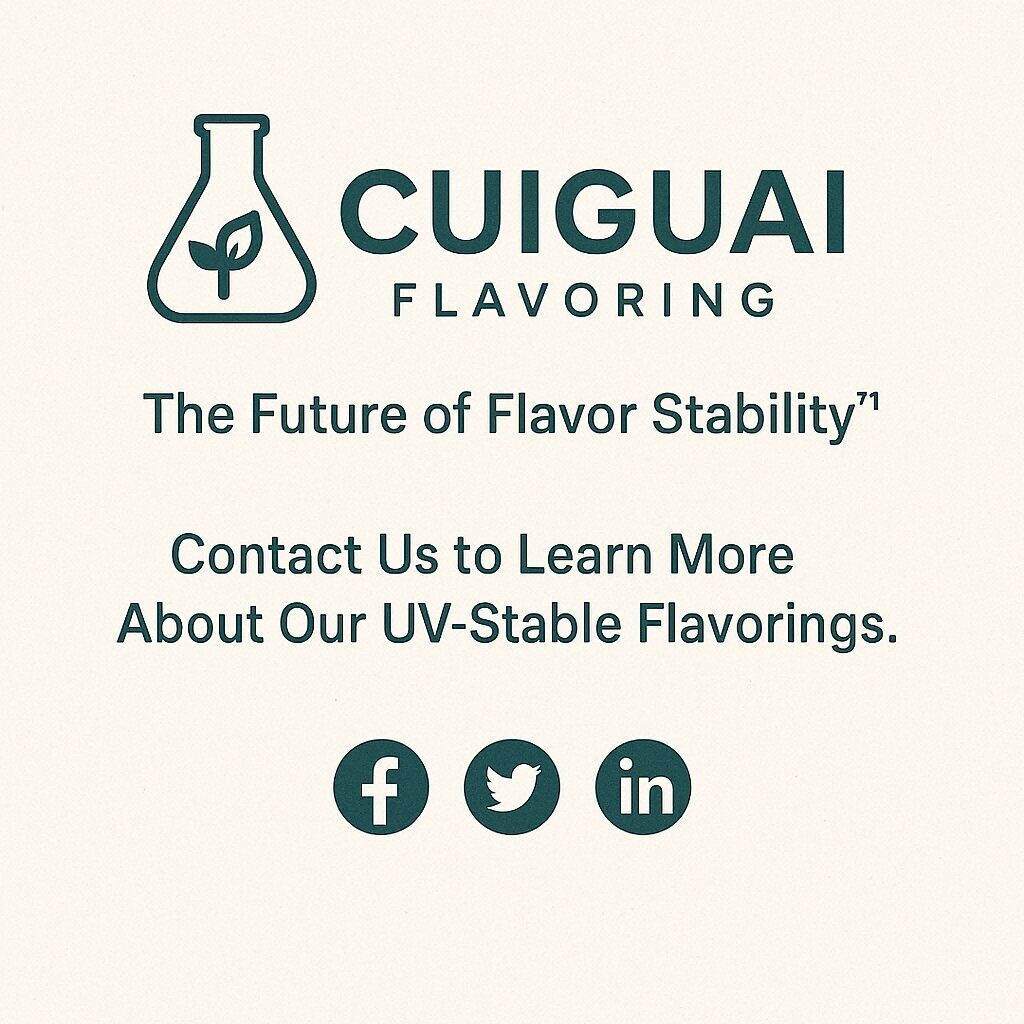
Electronic liquid bottle and molecular structure
In the world of consumer products, sensory experience reigns supreme. From the aromatic bliss of a freshly brewed coffee to the nuanced notes of a gourmet meal, flavor plays an undeniable role in delighting our senses and shaping our perceptions. Yet, beneath the surface of this sensory delight lies a hidden vulnerability: the pervasive and often underestimated threat of ultraviolet (UV) exposure. For products where flavor is paramount, such as e-liquids, pharmaceuticals, food and beverages, and cosmetics, UV radiation can be a silent saboteur, leading to off-flavors, reduced potency, and ultimately, a diminished user experience.
This comprehensive guide delves into the critical challenge of flavor degradation due to UV light and unveils a powerful solution: the strategic incorporation of photostabilizers. We’ll explore the science behind UV-induced degradation, the diverse world of photostabilizers, their mechanisms of action, and crucial considerations for their effective application, particularly within the demanding landscape of e-liquid formulations. Our goal is to equip formulators, manufacturers, and discerning consumers with the knowledge to safeguard sensory excellence and ensure flavor integrity, even under the most challenging light conditions.
Before we delve into solutions, it’s essential to understand the problem. UV light, an invisible segment of the electromagnetic spectrum, carries enough energy to disrupt molecular bonds. When this energy interacts with flavor compounds, a cascade of undesirable chemical reactions can ensue.
Flavor compounds, whether natural or synthetic, are often complex organic molecules. Many contain chromophores – molecular structures that absorb specific wavelengths of light. When these chromophores absorb UV energy, they become excited and highly reactive, leading to:
The exact degradation pathway depends heavily on the specific chemical structure of the flavor compounds, the intensity and duration of UV exposure, and the presence of other components in the formulation (e.g., oxygen, sensitizers). Regardless of the specific mechanism, the outcome is almost always a detrimental impact on the intended flavor profile, leading to consumer dissatisfaction and product spoilage.
Enter photostabilizers, the unsung heroes in the fight against UV degradation. These specialized additives are designed to mitigate or prevent the detrimental effects of UV radiation on sensitive materials, including flavorings. Their power lies in their diverse mechanisms of action, each targeting a different facet of the UV degradation process.
Photostabilizers can be broadly categorized based on how they protect the material:
Often, a combination of these photostabilizer types is used to provide synergistic protection, offering a more robust defense against the multifaceted assault of UV radiation. For instance, a UV absorber might provide initial shielding, while a HALS prevents the propagation of radical reactions, and an antioxidant cleans up any residual peroxides.
Ensuring the efficacy of photostabilizers requires rigorous testing. Manufacturers employ various methods to simulate real-world UV exposure and evaluate its impact on flavor integrity.
These tests expose samples to controlled, intensified UV radiation, often coupled with elevated temperatures and humidity, to simulate years of exposure in a compressed timeframe. Common equipment includes:
Alongside accelerated tests, real-time shelf-life studies involve storing products under typical display conditions (e.g., in clear packaging near windows) and monitoring their flavor stability over extended periods. While slower, these studies provide the most accurate representation of actual product performance.
The e-liquid market presents unique challenges for flavor stability. E-liquids are often sold in transparent or translucent bottles, making them highly susceptible to UV exposure during storage, display, and even consumer use. The volatile nature of many flavor compounds used in e-liquids further exacerbates this vulnerability.
When incorporating photostabilizers into e-liquid formulations, several critical factors must be considered:

Comparison of liquids after UV exposure
At CUIGUAI Flavoring, we understand the critical importance of flavor integrity. Our commitment to excellence extends beyond crafting exquisite taste profiles; it encompasses ensuring those profiles endure. This is why we are at the forefront of developing and recommending UV-stable flavoring solutions specifically designed for the demanding e-liquid market.
Our approach integrates advanced photostabilization technologies directly into our flavor formulations or provides complementary recommendations for formulators seeking to enhance the longevity of their e-liquid products. When you choose CUIGUAI Flavoring, you’re not just getting exceptional taste; you’re investing in flavor stability under UV exposure.
We meticulously select and test our flavor compounds for inherent UV resistance and, where necessary, incorporate food-grade, inhalation-safe photostabilizers that are sensory-neutral and highly effective. Our team of flavor chemists and material scientists works diligently to:
We are proud to recommend CUIGUAI Flavoring’s dedicated line of e-liquid specific flavorings, meticulously engineered for superior UV stability. Our “SunGuard Series” (a suggested name for a product line) represents the pinnacle of flavor protection, ensuring that the vibrant, nuanced tastes you create remain consistent and true, from the moment of manufacture to the last satisfying puff.

Four major benefits of light stabilizers
The battle against UV-induced flavor degradation is an ongoing one, but with the right knowledge and tools, it’s a battle that can be won. By understanding the mechanisms of UV damage and strategically incorporating advanced photostabilizers, formulators and manufacturers can significantly enhance the stability and longevity of their flavor-sensitive products, particularly in the rapidly evolving e-liquid market.
At CUIGUAI Flavoring, we are committed to providing innovative solutions that empower our partners to deliver superior sensory experiences. Our dedication to UV stable flavoring and our expertise in photostabilizer vape applications ensure that your products retain their intended vibrancy and appeal, safeguarding your brand’s reputation and delighting consumers with every interaction.
Don’t let the silent saboteur of UV light compromise your product’s excellence. Partner with CUIGUAI Flavoring and illuminate a path to lasting flavor perfection.

CUIGUAI Flavoring Brand Design
Keywords: UV stable flavoring, photostabilizer vape,Flavor Concentrates for E-Liquids
Author: R&D Team, CUIGUAI Flavoring
Published by: Guangdong Unique Flavor Co., Ltd.
Last Updated: Jul 14, 2025
The business scope includes licensed projects: food additive production. General projects: sales of food additives; manufacturing of daily chemical products; sales of daily chemical products; technical services, technology development, technical consultation, technology exchange, technology transfer, and technology promotion; biological feed research and development; industrial enzyme preparation research and development; cosmetics wholesale; domestic trading agency; sales of sanitary products and disposable medical supplies; retail of kitchenware, sanitary ware and daily sundries; sales of daily necessities; food sales (only sales of pre-packaged food).
Copyright ©Guangdong Unique Flavor Co., Ltd.All Rights Reserved. Privacy Policy